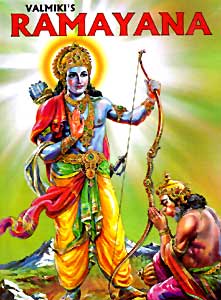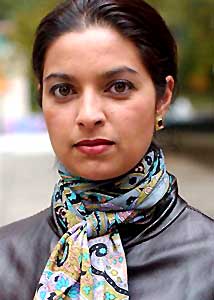 Epic themes in Indian literature basically defines and assays to portray the out and out influence and sway that the ancient literatures had on the subsequent humanity and that which is still going on. The Epic Age can basically be attributed to the times beginning from 1500 B.C. and culminating in 1200 A.D. Hence, before analysing the influence of epic themes in Indian literature, it is first necessary to comprehend the times of Epic India and its culture and customs. This was the very period that is verily titled Golden Age in India, with proliferation, affluence and richness redefining its subjects and populace. The Mauryan Empire was, during the Epic Age, at its helm, with equality and unity in diversity being manifested throughout their territorial reign. When concerned with literature, this was the very genre that had perhaps grown rapidly the most, with Sanskrit literature, commencing from Vedic Sanskrit, had come down in the illustrious line to Classical Sanskrit. However, the two great epics in Hinduism, the predominant religion during that time in the country, Ramayana and Mahabharata had already been scripted, gradually gaining its stronghold with time and its magnificence. The Puranas (also known as the Itihasas), another subsidiary form of epic literature, had also been penned, arresting general attention time and again.
Epic themes in Indian literature basically defines and assays to portray the out and out influence and sway that the ancient literatures had on the subsequent humanity and that which is still going on. The Epic Age can basically be attributed to the times beginning from 1500 B.C. and culminating in 1200 A.D. Hence, before analysing the influence of epic themes in Indian literature, it is first necessary to comprehend the times of Epic India and its culture and customs. This was the very period that is verily titled Golden Age in India, with proliferation, affluence and richness redefining its subjects and populace. The Mauryan Empire was, during the Epic Age, at its helm, with equality and unity in diversity being manifested throughout their territorial reign. When concerned with literature, this was the very genre that had perhaps grown rapidly the most, with Sanskrit literature, commencing from Vedic Sanskrit, had come down in the illustrious line to Classical Sanskrit. However, the two great epics in Hinduism, the predominant religion during that time in the country, Ramayana and Mahabharata had already been scripted, gradually gaining its stronghold with time and its magnificence. The Puranas (also known as the Itihasas), another subsidiary form of epic literature, had also been penned, arresting general attention time and again.
If Indian literature is considered from the commencement of Indus Valley Civilization, it can absolutely be stated that with the advent of the Aryans and the beginning of the Vedic Period, Sanskrit literature was the very first an illustration containing epic themes. Ramayana and Mahabharata by sages Valmiki and Vyasa respectively, had itself ushered in the era and concept of what for the very first time was heard as being `epic`. The magnum opus creation and conception of the authors, the familial relationships and the ties and binds of brothers torn between duty and antagonism, have completely paved way for future generation writers to forever bear epic theme in mind. Then again, moving away from these two cardinal epics, pivoting around which every life is defined; there also exists umpteen and even umpteen epic themes in Indian literature, which have over and over again resorted to seek refuge in Ramayana and Mahabharata. The epical themes post these gargantuan epic verses, have been manifested in Vedic and Classical Sanskrit literature, beginning from the legendary litterateur Kalidasa. His poetical verses in the colossal poetry comprising Ritusamhara, Meghaduta and Kumarasambhava, especially the second instance bear splendid examples of being epic in nature. The rhythmic differentiation of cantos into paragraphs, or the varying metamorphosis of every thought change in further cantos, is wholly depicted Meghaduta and Ritusamhara. Hence, it can be seen that epic themes in Indian literature, besides just being employed in novel are also employed in poetry as well as drama. Yet again, Kalidasa`s plays like Abhijnanasakuntalam, Malavikagnimitra and Vikramorvasiya score over every other Sanskritic litterateurs in India. Indeed, Kalidasa`s employment of language structure, or the format of climax building, has forever interested his trusted readers, forever regarding the writer with esteem.
Epic themes in Indian literature during this Vedic Age again are mirrored in the post-Kalidasa period. Another playwright in Sanskrit literature, Bhasa, wholly was in the habit to base his plays on Ramayana. During the 7th century, Bhavabhuti, the greatest playwright of the post-Kalidasa period, with his two plays, Mahaviracharita and Uttararamacharita, idyllically mirrored the earlier life of Rama as well as his later occurrences. Both the plays, particularly the second one is acclaimed to be one of the finest works in Sanskrit, distinguished by its lyricism and deeply felt pathos. Mention can also be made of Anargharaghava by Murari who existed between the 9th and 10th century. The play had enjoyed significant popularity among the scholars as it is manifested by the sobriquet `Bala Valmiki` (the young Valmiki) bestowed upon him by his loyalists. Rajashekhara, a contemporary of Murari, too had penned a one-act play titled Bala Ramayana, which includes Rama`s coronation as its climaxing event. Rajashekhara indeed wanted to repeat the feat, by taking up Mahabharata as his subject, in his over-ambitious play Balabharata. He however could not complete except two acts, revolving around Draupadi`s wedding and the gambling scene.
Epic themes in later Indian literature can also be evidenced in Tamil, Bengali and Kannada literature, which have thoroughly utilised influences from Ramayana and Mahabharata. It is very much seen that be it in any other later periods, beginning from Classical, Medieval, Later-Medieval, or British rule, people had never successfully been able to shed off the cast of these two magnum creations. Writers time and again, in every regional or English Indian literature, have quoted or been inclined or tempted to rephrase from Vedic Epics. Several examples can be stated in this regard. A true fact that can be mentioned is that, Tamil language was already rich in its lexicon and usage by the time of arrival of later Classical Sanskrit literature. Kamban`s version of the Ramayana had ushered in such an aura and era into the customary Indian writing style, that other gracious and undulating epic worlds were in a big way influenced by him and his penmanship. This factor had played true of all the other poets of his kind too, like Krittivasa of Bengal reiterating Rama`s tale, Kumara Vyasa of Karnataka penning Gadugina Bharata, Sarala Dasa of Orissa metamorphosing the Mahabharata tale to make it quite contemporaneous for his times.
 This is precisely the process by which the subsequent Indian population has been blessed with several great narratives based upon Vyasa and Valmiki. Even if only the land south of the Vindhyas is observed, there survives God`s plenty in Indian literature based on epic themes. Marathi literature exudes a pride of its own by the Sisupala Vadh of Bhaskarabhatta Borikar and Murti Prakasa of Keshavraj Suri. Telugu literature surfaces completely in the 11th century with Nannayya`s translation of the Mahabharata. He could however accomplish only the Adi and Sabha Parvas, though. Tikkanna and Yerrapragada had arrived later to finish the pending work. As for Ramayana, there are nearly two hundred and fifty versions existing today, beginning with Gona Budha Reddy`s Ranganatha Ramayana. The trans-creation of the epic by the poetess Molla (16th century) is also justly legendary by its own right. She was the daughter of a potter of Gopavaram, a village close by to Nellore. This was the golden period in medieval literature when some of the finest works in Telugu were compiled.
This is precisely the process by which the subsequent Indian population has been blessed with several great narratives based upon Vyasa and Valmiki. Even if only the land south of the Vindhyas is observed, there survives God`s plenty in Indian literature based on epic themes. Marathi literature exudes a pride of its own by the Sisupala Vadh of Bhaskarabhatta Borikar and Murti Prakasa of Keshavraj Suri. Telugu literature surfaces completely in the 11th century with Nannayya`s translation of the Mahabharata. He could however accomplish only the Adi and Sabha Parvas, though. Tikkanna and Yerrapragada had arrived later to finish the pending work. As for Ramayana, there are nearly two hundred and fifty versions existing today, beginning with Gona Budha Reddy`s Ranganatha Ramayana. The trans-creation of the epic by the poetess Molla (16th century) is also justly legendary by its own right. She was the daughter of a potter of Gopavaram, a village close by to Nellore. This was the golden period in medieval literature when some of the finest works in Telugu were compiled.
However, it is not only classical Sanskrit and regional literature during which epic themes in Indian literature could be witnessed. The present Indian era deserves a special mention in epical influential regard. Indian English writers and their works presently are a great rage with readers, with regional literature not also left far behind. English writers like R.K. Narayan, Shashi Tharoor and his The Great Indian Novel, or writers like Amitav Ghosh, Vikram Seth, Salman Rushdie, Arundhati Roy, Jhumpa Lahiri; poets like Michael Madhusudan Dutt, Kamala Das, Amit Chaudhuri have always loved to blatantly quote their affinity for ancient Indian epics and their everlasting and charismatic concept, depicting a quintessential Indian family or political administration.













